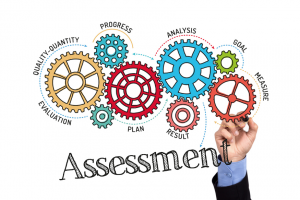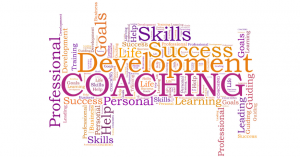
Contrary to popular awareness, quiet quitting is not new. It used to be called employee disengagement. Before that, many called quiet quitters difficult people to work with! And still do. Jeannette Seibly
Quietly quitting can be viewed from several different points of view: bosses and leaders vs. entrepreneurs and gig workers vs. employees and team members.
As a boss/leader, when you are unaware, in denial, or unwilling to transform a ‘quiet quitter’ into a productive team member, they multiply. As a result, your company suffers, and your customers leave. This article focuses on reengaging quiet quitters and transforming how you manage for intended results.
Team members that are ‘quietly quitting’ are not outright quitting their jobs. They’ll still perform basic job duties but are unwilling to go above and beyond. They refuse to glorify workaholic behavior like Boomers and Gen Xers used to succeed in their careers. These team members get enough done to avoid being fired, refuse overtime, and stop responding to emails and texts outside work hours.
This attitude of quietly quitting comes across in team members’ words and actions, causing customers to leave and leaders perplexed about what to do to change it.
Why Does This Covert Method of Quietly Quitting Fail to Work?
Failing to have straight and respectful conversations always fails to produce the intended results and create the innovative changes needed to grow your team, company, and customers!
The bottom line is that change requires two-way communication:
- Allowing team members to speak up respectfully so they feel heard and,
- You listening and transforming traditional work style behaviors and expectations.
Other perspectives to consider:
Employees/team members: Quietly quitting is not the answer when you are dissatisfied, stressed, or unclear about managing new work and family life challenges. It’s time to step up and speak up in a respectful manner that gets results. A covert power struggle will have customers leave, and your employer closes its doors.
Entrepreneurs/gig workers: Being a business owner requires a business mindset. What are you unwilling to ask for if you don’t feel fairly compensated? Talk with a coach for clarity. Expecting companies to pay more than your contract specifies isn’t realistic. And, quietly quitting is a very poor business tactic.
As the Boss and Leader, It’s Up to You!
Learn to Truly Listen. Team members check out when you fail to be present in meetings or conversations! Apologize and stop letting your mind wander! You’ll be amazed by how the simple act of genuinely listening can make a huge difference in someone feeling valued. When team members feel valued and respected, they’ll reengage.
Talk with Team Members 1:1 and as a Group. Learn about the person and what they need.
Questions to ask:
- “Tell me about your work.”
- “What do you like?”
- “What don’t you like about it?” Or, “What is your #1 challenge?”
- “What can we do to solve it?”
Have straight conversations and “come down to reality” conversations about changes you can make and those you cannot. (Remember, changing job duties to accommodate someone’s unhappiness won’t make them happier if they are in the wrong job!)
Transform Your Mindset. It’s a New Normal. COVID, economic, and societal disruptions have changed everyone’s mindset about work. Be open to making needed changes to ensure team members work in jobs they enjoy, are fairly compensated, and have time to pursue family/personal life goals. Remember, it’s important to meet customer needs and team members’ needs too.
Set Realistic and Attainable Goals. With only 10% of teams achieving their intended results, as a leader, you need to step up your game and learn how to set goals and manage the process. The place to start is to hold team members accountable and provide them with the tools and resources required to achieve the intended results. Team members are reengaged when winning individually and as a team.
Job fit is the #1 reason people succeed at work! Harvard Business Review
Use a Qualified Job Fit Assessment for Hiring and Job Restructuring. Many team members and their bosses/leaders are in jobs that don’t fit them. As a result, they are bored or overwhelmed and lack the skills and willingness to develop skills they’re not interested in learning. Use a qualified job fit assessment that provides valid and reliable data to guide restructuring job duties and creating clear career paths for transfers, promotions, and pay increases. Be sure to get their feedback before making any changes! Or, they will either quietly quit (again) or leave the company. (Hint: Adding more tasks to the current job responsibilities is not restructuring a job!) (Hint #2: Don’t make (or imply) promises for pay increases and promotions you cannot fulfill.)
Don’t forget to grab, Hire Amazing Employees and create a strategic selection system for job fit when hiring, rehiring, transferring, or promoting employees. It will reduce the number of quiet quitters and reengage team members in their jobs.
©Jeannette Seibly 2022 All Rights Reserved
 Jeannette Seibly is The Leadership Results Coach. She has been an award-winning international executive and family business management consultant, keynote speaker, and author for over 29 years. Her focus is to guide leaders to make a positive difference. Feel stuck moving your team forward? Want straightforward counsel on how to do it? Let’s chat! Contact Jeannette for a confidential conversation.
Jeannette Seibly is The Leadership Results Coach. She has been an award-winning international executive and family business management consultant, keynote speaker, and author for over 29 years. Her focus is to guide leaders to make a positive difference. Feel stuck moving your team forward? Want straightforward counsel on how to do it? Let’s chat! Contact Jeannette for a confidential conversation.
A note from Jeannette about “quiet quitters”: When you are unaware, in denial, or unwilling to transform a ‘quiet quitter’ into a productive team member, they multiply. Your company suffers, and your customers leave. Have questions about how to identify this issue and turn it around? Most do! Let’s chat now!
 Why are employees “quietly quitting?” One of the critical issues is poor job fit for employees! And poor job fit for their bosses who got promoted without the skills to be leaders. It’s time to develop a strategic selection system to improve your hiring results! Get your copy of the newly released, Hire Amazing Employees: How to Increase Retention, Revenues and Results!
Why are employees “quietly quitting?” One of the critical issues is poor job fit for employees! And poor job fit for their bosses who got promoted without the skills to be leaders. It’s time to develop a strategic selection system to improve your hiring results! Get your copy of the newly released, Hire Amazing Employees: How to Increase Retention, Revenues and Results!


 Jeannette Seibly is The Leadership Results Coach. She has been an award-winning international executive and family business management consultant, keynote speaker, and author for over 29 years. Her focus is to guide leaders to make a positive difference. Feel stuck moving your team forward? Want straightforward counsel on how to do it? Let’s chat!
Jeannette Seibly is The Leadership Results Coach. She has been an award-winning international executive and family business management consultant, keynote speaker, and author for over 29 years. Her focus is to guide leaders to make a positive difference. Feel stuck moving your team forward? Want straightforward counsel on how to do it? Let’s chat! 
 Jeannette Seibly is The Leadership Results Coach. She has been an award-winning international executive and family business management consultant, keynote speaker, and author for over 29 years. Her focus is to guide leaders to make a positive difference. Feel stuck moving your team forward? Want straightforward counsel on how to do it? Let’s chat!
Jeannette Seibly is The Leadership Results Coach. She has been an award-winning international executive and family business management consultant, keynote speaker, and author for over 29 years. Her focus is to guide leaders to make a positive difference. Feel stuck moving your team forward? Want straightforward counsel on how to do it? Let’s chat! 





